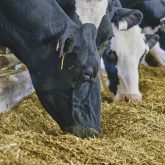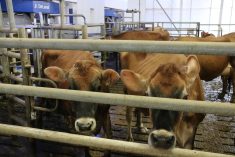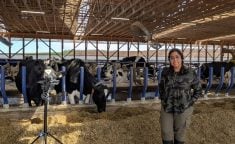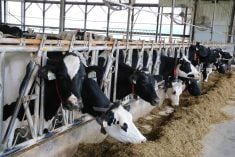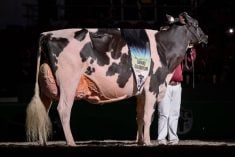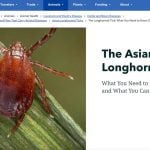A new calf health index will be included in August dairy cattle proofs in Canada.
The index focuses on which bulls have daughters with less risk for diarrhea and respiratory disease.
Why it matters: Significant calfhood infections affect first lactation milk production.
Colin Lynch of Lactanet worked to develop the index. He told recent Lactanet Open Industry attendees that 60 per cent of the index is weighted to diarrhea and 40 per cent of the index concerns respiratory disease.
The higher weighting for diarrhea is because calves with that disease are more likely to die and treatment costs are higher than respiratory disease. Calves with diarrhea are more likely to become infected by respiratory disease as a secondary infection. Therefore, it is more valuable to work at stopping diarrhea first.
Read Also
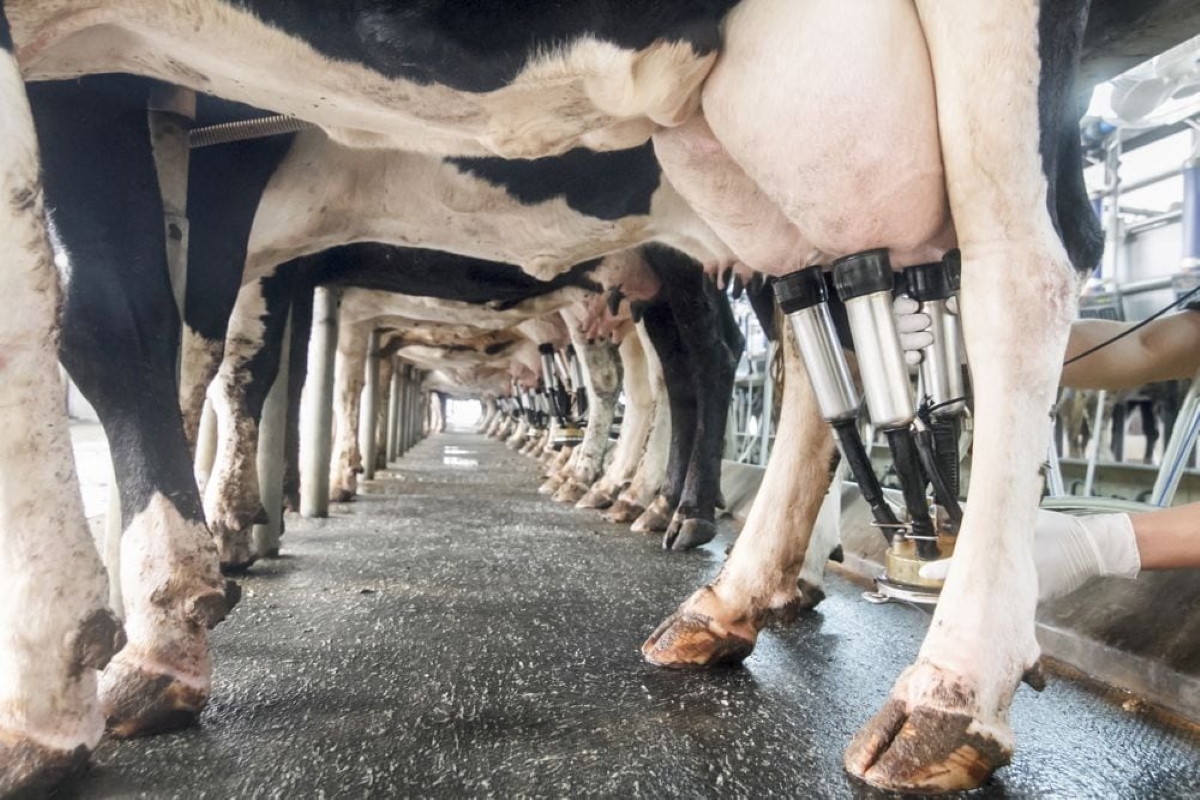
Farm gate milk price to rise in 2026
The Canadian Dairy Commission will raise its farm gate milk price by 2.3255 per cent in February, the Crown corporation announced on Friday.
Lynch says that the two diseases account for three quarters of preweaning mortality and there are effects later in a cow’s life.
“In the literature, I’ve seen several studies indicating reduced milk production in first lactation due to the incidence of either of these diseases, as well as reduced fertility performance in that first lactation as well,” said Lynch.
There’s also value in showing consumers that the industry is working to keep calves healthier.
The data to prove the index came from producer information loaded into information systems, mostly DairyComp 305 from January 2007 to December 2024, and primarily from Ontario and western provinces.
Over that time about 19.5 per cent of calves had a respiratory infection and 21.1 per cent diarrhea, which Lynch said is similar to what researchers have found in the dairy calf population elsewhere.
There are more than 2,900 dairy sires with enough data to have a proof for either respiratory infection or diarrhea and there’s a strong correlation between the two traits — so if a bull has one or the other, the data is good enough.
Analysis of the data shows that there’s a significant difference among the top 10 and bottom 10 bulls for the respiratory and diarrhea traits.
The top 10 bulls average 86 per cent healthy calves, whereas the bottom 10 bulls average 64 per cent healthy calves for respiratory disease. The top 10 bulls for diarrhea average 95 per cent healthy calves and the bottom 10 bulls 51 per cent healthy calves.
Daughters born to sires with a relative breeding value (RBV) of under 90 are 1.3 times more likely to have a respiratory disease than daughters of sires with an RBV of over 110.
Similarly, daughters of sires with an RBV under 90 are 1.8 times more likely to have diarrhea than daughters of sires over 110 for their RBV.
Reducing calfhood diseases should have a payoff for farmers.
“It’s likely the diarrhea is, in certain cases, acting as a precursor for respiratory problems later in life,” said Lynch. “If we put an extra effort on reducing diarrhea it will have a strong knock-on effect of also reducing respiratory problems.”
The index will also be integrated into the Lifetime Performance Index (LPI), but not until April 2026.





